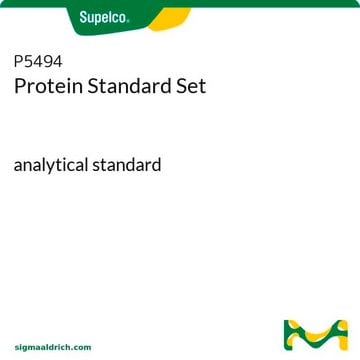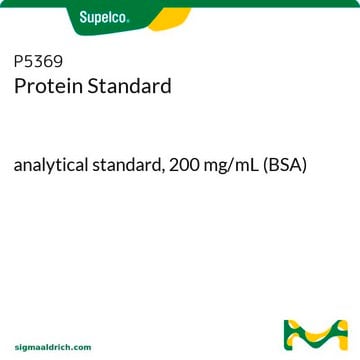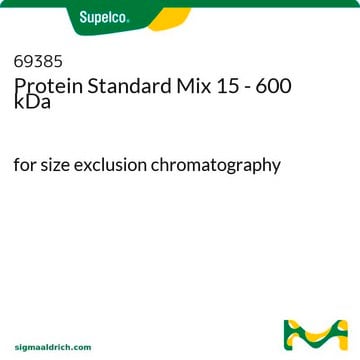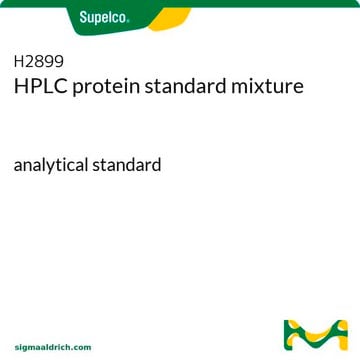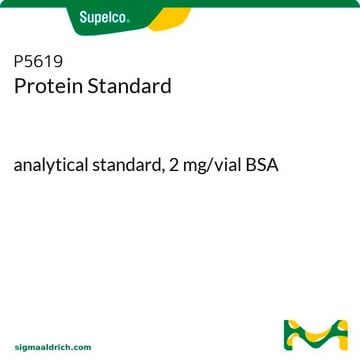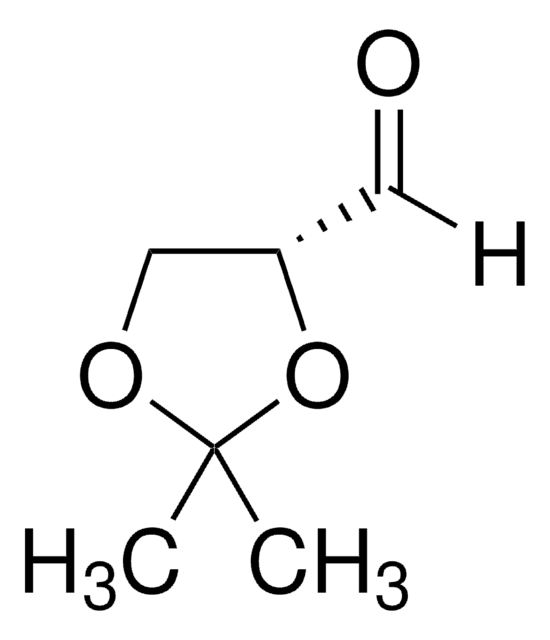P8994
Protein-Standard, 80 mg/ml BSA
analytical standard
Anmeldenzur Ansicht organisationsspezifischer und vertraglich vereinbarter Preise
Alle Fotos(1)
About This Item
UNSPSC-Code:
85151701
Empfohlene Produkte
Qualität
analytical standard
Qualitätsniveau
chemische Klasse(n) des Analyten
amino acids, peptides, proteins
Methode(n)
gel permeation chromatography (GPC): suitable
Anwendung(en)
food and beverages
Format
neat
Lagertemp.
2-8°C
Lagerklassenschlüssel
12 - Non Combustible Liquids
WGK
WGK 2
Flammpunkt (°F)
Not applicable
Flammpunkt (°C)
Not applicable
Choose from one of the most recent versions:
Analysenzertifikate (COA)
Lot/Batch Number
Don't see the Right Version?
If you require a particular version, you can look up a specific certificate by the Lot or Batch number.
Besitzen Sie dieses Produkt bereits?
In der Dokumentenbibliothek finden Sie die Dokumentation zu den Produkten, die Sie kürzlich erworben haben.
Ganary Dabiri et al.
The Journal of investigative dermatology, 128(10), 2518-2525 (2008-04-11)
Following severe traumatic or thermal injury to the dermis, hypertrophic scars (HTSs) often develop in humans. These scar fibroblasts (hypertrophic scar fibroblasts (HTSFs)) retain the myofibroblast phenotype persistently, rather than transiently as in acute wounds. These pathogenic myofibroblasts constitutively express
Guowu Hu et al.
The Journal of clinical investigation, 118(3), 1186-1197 (2008-02-09)
Autophagy is a process by which cells recycle cytoplasm and defective organelles during stress situations such as nutrient starvation. It can also be used by host cells as an immune defense mechanism to eliminate infectious pathogens. Here we describe the
Nabanita De et al.
PLoS biology, 6(3), e67-e67 (2008-03-28)
Environmental signals that trigger bacterial pathogenesis and biofilm formation are mediated by changes in the level of cyclic dimeric guanosine monophosphate (c-di-GMP), a unique eubacterial second messenger. Tight regulation of cellular c-di-GMP concentration is governed by diguanylate cyclases and phosphodiesterases
Umut Gazi et al.
The Journal of biological chemistry, 286(10), 7822-7829 (2011-01-06)
The mannose receptor (MR) is an endocytic type I membrane molecule with a broad ligand specificity that is involved in both hemostasis and pathogen recognition. Membrane-anchored MR is cleaved by a metalloproteinase into functional soluble MR (sMR) composed of the
Unser Team von Wissenschaftlern verfügt über Erfahrung in allen Forschungsbereichen einschließlich Life Science, Materialwissenschaften, chemischer Synthese, Chromatographie, Analytik und vielen mehr..
Setzen Sie sich mit dem technischen Dienst in Verbindung.